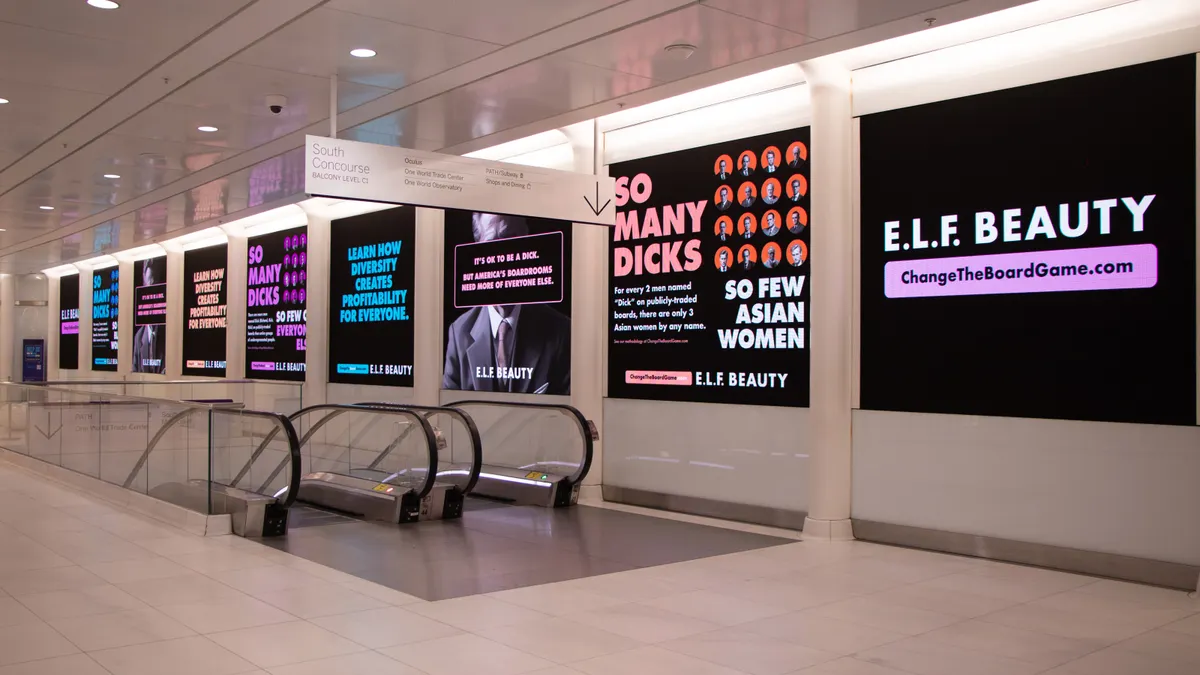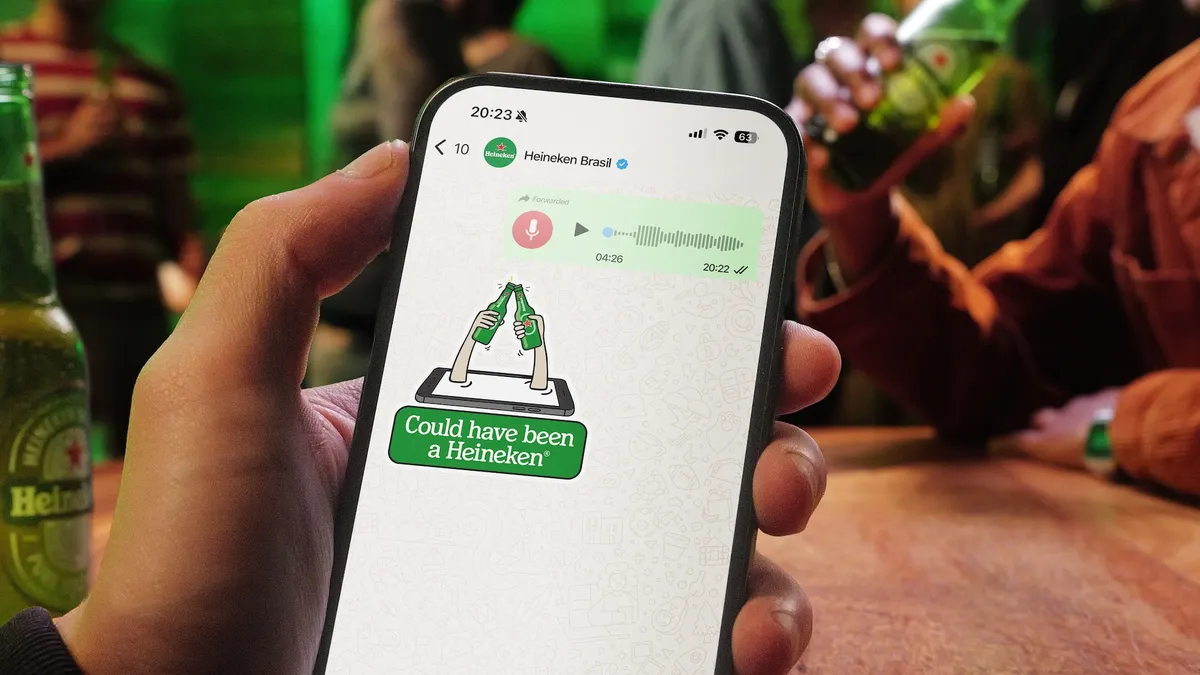The prospect of walking into a mall last year during the holidays probably put off a lot of consumers looking to avoid the headaches that can be caused by high-congestion crowds. To help calm some of that anxiety, more brands are now building chatbots that offer visitors additional guidance and deliver on an omnichannel experience that might provide a tech advantage in a tightly-competitive category.
Launched in early December, just as the holiday shopping season kicked into high gear, Mall of America's chatbot uses artificial intelligence (AI) technology to provide directions and food and event recommendations, as well as store and gift suggestions. Available via its website, mobile app and a Facebook page, the chatbot — which was developed by the location-based specialty firm Satisfi Labs — is actually the shopping center's second foray into AI-enabled assistants, following a pilot project around the same time the previous year.
"The first one was more of a limited engagement focused on our holiday campaign or typical customer itineraries," said Sarah Townes, Mall of America's vice president of marketing. "It's been part of a process of identifying different opportunities to really improve (customers') overall experience."
Many other brands are going through a similar process after early experiments. While talk about the promise of virtual assistants seemed to be everywhere in early 2017, real-world examples only came into clear focus in the fourth quarter as high-end luxury brands such as Louis Vuitton, family-friendly restaurant chains like TGI Fridays and even Singapore Airlines dispelled notions that the market for chatbots was powering down.
"There were some early misfires that have been coming from chatbots, with [the technology] not being able to do as much as originally promised," said Jane Price, senior vice president of marketing at Interactions, a company that builds conversational software tools for customer care. "There were a lot of trials over the last 12 months where a brand might say, 'Let's quickly stand up a Facebook Messenger chatbot.' They've then run into the limitations because the chatbots haven't been able to handle a couple of things, and the consumer ends up needing to talk to a person."
The question now, with more solid building blocks in place, is where marketers can take their chatbot applications in 2018.
Building an on-brand 'bot
In 2018, 20% of companies will leverage AI to make business decisions and offer customer service and sales support through automated communications, according to a recent forecast from Forrester Research. In the same report, the firm predicted that chatbots and similar chat offerings are primed to compete more with email in customer service strategies. While this presents exciting opportunities, Forrester also suggested that poor chat experiences will drive customer satisfaction down, emphasizing the need to get ahead of the trend now.
While the term 'chatbots' is used to describe a spectrum of tools, Price said her firm distinguishes what it creates as intelligent virtual assistants, or IVAs.
"Chatbots have really been these text-based interfaces that kind of vary in terms of what's technically behind them," she said. "Some have pure logic and others are essentially a form-fill or basic conversations."
IVAs, in contrast, use more advanced AI to let consumers ask more open-ended questions or answer in full sentences. Even if brands aren't looking to invest into creating a full-fledged IVA, developing a chatbot strategy may involve more than merely offering a communication channel through Facebook Messenger. DEG Digital, for example, recently created a gift guide chatbot for Beauty Brands, a salon and spa superstore, that combined a mix of off-the-shelf technology and custom development.
"A chatbot can do so many different things. The reason why we chose the gift guide is we felt that, with the Beauty Brands experience, when you walk into a store, you don't always know what you want, let alone if you're buying for someone else," said Jen Forrest, DEG Digital's social media director. "The idea was that a chatbot would give that real-time decision-making to bring them to a consultative process."
DEG developed personas to gauge and plan around what kind of interactions the chatbot would have, according to Forrest. Townes said marketers should go through a similar exercise with the chatbot itself in order to bring a sense of humanity into the way consumers talk to it.
"We have a ton of fun with the content we're able to integrate into the chatbot experience," she said. "We give them a personality — to be approachable, fun, engaged, passionate. It has to align with the rest of your brand."
Some brands go so far as to name their chatbots, but much like developing an ad campaign, the important thing is to do some soul-searching about what emotional connection the technology could create with a consumer, per Price.
"How do you want a chatbot to respond to make sure the automation feels on-brand?" she said, adding that marketers need to think of the channels a consumer may want to use after working with a chatbot. "For quick experiences it might be fine but for something higher-touch, they might need to talk to a person."
Marketing the chatbot option
Once that "personality" has been established, brands need to figure out how best to drive adoption, which may take a marketing campaign all its own. Townes said Mall of America was including promotion of the chatbot in some of its paid media, for instance. Justine Santa Cruz, vice-president at Satisfi Labs, said other customers use step-and-repeats in physical locations to raise awareness.
"They might prompt their users with a welcome message that encourages people and makes them feel at ease," she said. "It might say, 'Start with X' to show what you could ask. Having that example is always helpful."
As marketers get more used to integrating chatbots into the customer experience next year, experts say the focus may evolve beyond merely service-related issues and driving sales. Forrest, for instance, said Beauty Brands is looking at key performance indicators that include average order value. At the moment, however, marketers like Townes say the emphasis is on meeting customers' needs and building loyalty.
"It's really about the guest interaction or engagement, and [being] able to serve up relevant answers with a series of interactions that are positive-feeling and with the actual answer they were looking for," she said, adding that Mall of America will be not only measuring the results with local shoppers but the differences in how international tourists and visitors use the chatbot.
Santa Cruz suggested that even if chatbots still seem like complicated technology, the underlying needs are not.
"It's like conducting a Google search — consumers just want quality answers, no matter where they ask that question," she said.




















